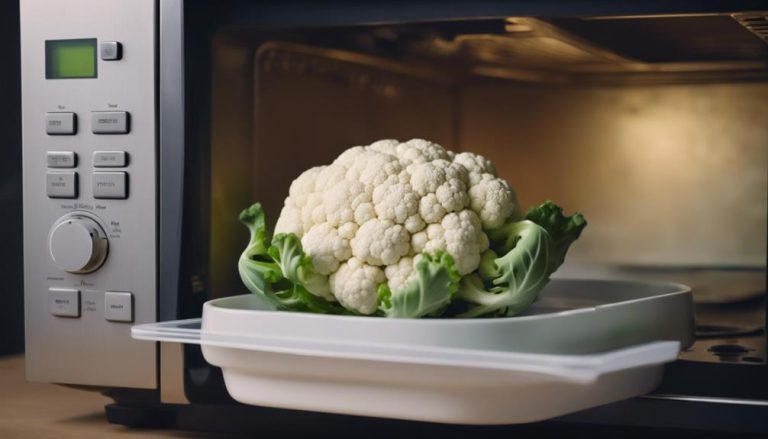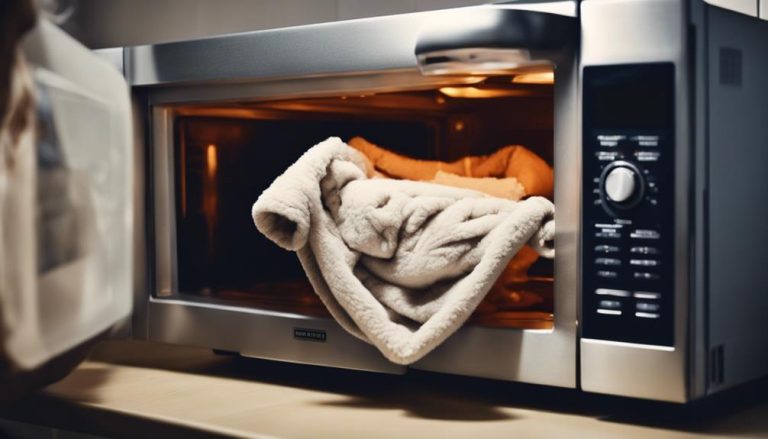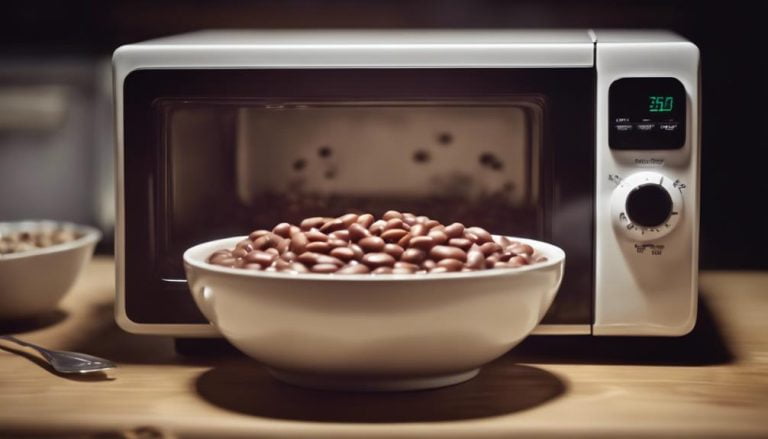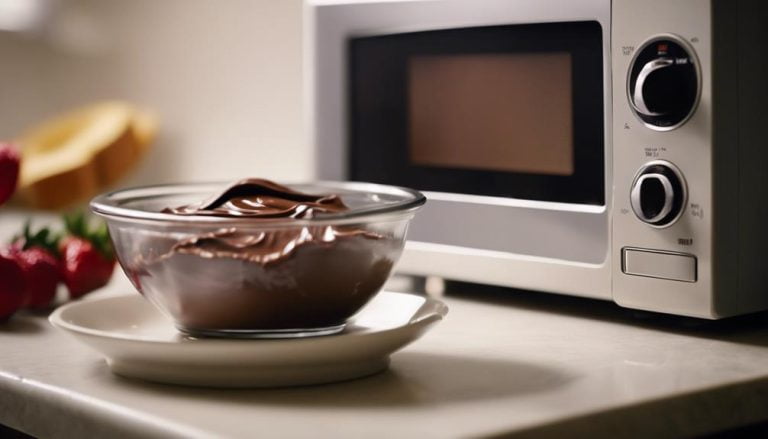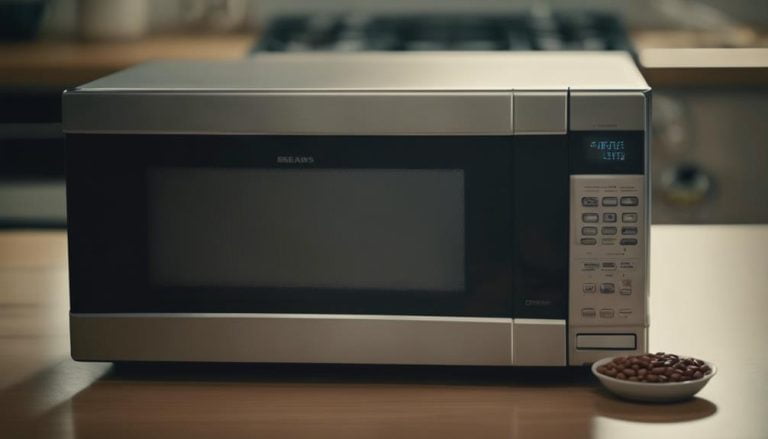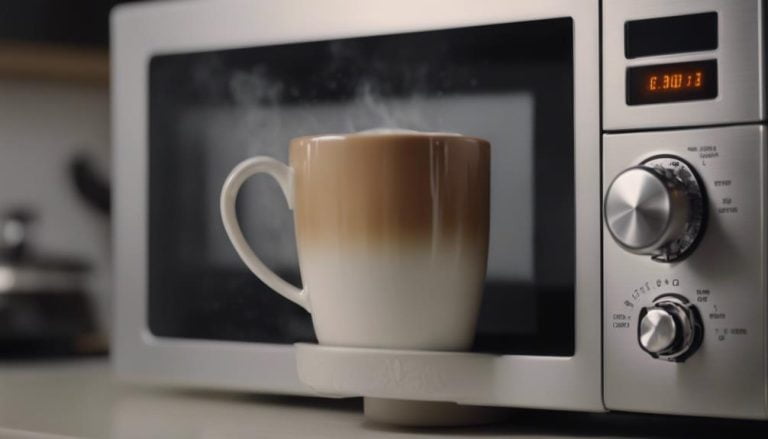Can You Microwave a Sponge
Yes, you can microwave a sponge to effectively disinfect it.
Microwaving a sponge is a simple and cost-effective way to reduce bacterial contamination and maintain a clean kitchen environment.
However, it is important to follow certain guidelines and precautions to ensure safe and effective disinfection.
Key Takeaways
- Microwaving sponges disinfects effectively by killing up to 99.9% of bacteria.
- Wetting the sponge before microwaving is crucial for safe disinfection.
- Regular microwaving every other day maintains sponge cleanliness.
- Proper precautions prevent fire hazards when microwaving sponges.
Safety of Microwaving Sponges
Microwaving sponges can be a safe and effective method for disinfection, provided that proper precautions are observed to prevent fire hazards. Sponges without metal components are suitable for microwaving to achieve effective bacteria elimination. This method can kill up to 99% of bacteria, extending the sponge's lifespan and ensuring cleanliness.
Following proper guidelines, like moistening the sponge, is crucial for safe and efficient disinfection. By microwaving sponges correctly, you can eliminate harmful bacteria effectively while reducing the risk of fire hazards. Adhering to safety measures and utilizing a wet sponge are key to maximizing the benefits of microwaving for disinfecting purposes.
Effectiveness in Killing Bacteria
In exploring the efficacy of utilizing microwaving as a method for disinfecting sponges, it is essential to consider the significant impact on eliminating bacteria and ensuring cleanliness.
When microwaving a sponge, it can kill up to 99.9% of bacteria, including harmful strains like E. Coli and Salmonella. Research confirms that microwaving is an effective method to reduce the bacteria load on sponges, making them safer for use in the kitchen.
Regular microwaving over time significantly decreases the bacterial load, promoting a cleaner environment. The heat generated during microwaving causes both thermal and nonthermal effects that contribute to the elimination of bacteria.
It is crucial to wet the sponge before microwaving to prevent fire hazards and ensure safe disinfection.
Steps to Disinfect in Microwave
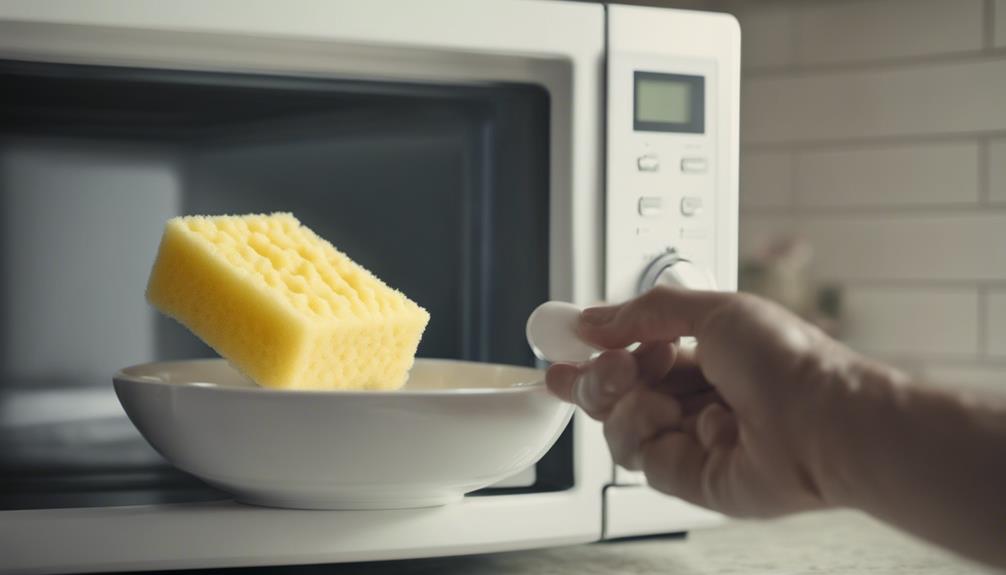
To effectively disinfect a sponge in the microwave, it is essential to begin by saturating the sponge with water before proceeding with the disinfection process. Sponges, when used, can harbor various bacteria species, making them dirty and smellier over time.
By microwaving a wet sponge on high for 2 minutes, up to 99.9% of bacteria can be killed, reducing the risk of contamination. It is crucial to use a microwave-safe container to prevent any damage to the microwave during the process.
Caution should be exercised when handling the hot sponge post-microwaving, using oven mitts or tongs to avoid burns. Regularly microwaving sponges every other day can help maintain cleanliness and hygiene in the kitchen.
Frequency of Sponge Disinfection
Regularly disinfecting sponges is essential to prevent the accumulation of harmful bacteria and maintain optimal hygiene in the kitchen. Moist environments within kitchen sponges can promote bacterial growth, emphasizing the need for regular disinfection to ensure a safe cleaning tool.
Effective methods such as microwaving a sponge or using the dishwasher are crucial for killing harmful bacteria and maintaining cleanliness. To prevent bacterial multiplication, it is recommended to disinfect sponges in the microwave every other day.
Rinsing and wringing out sponges after each use also play a significant role in maintaining sponge hygiene and preventing the spread of harmful bacteria.
Alternative Sponge Cleaning Methods
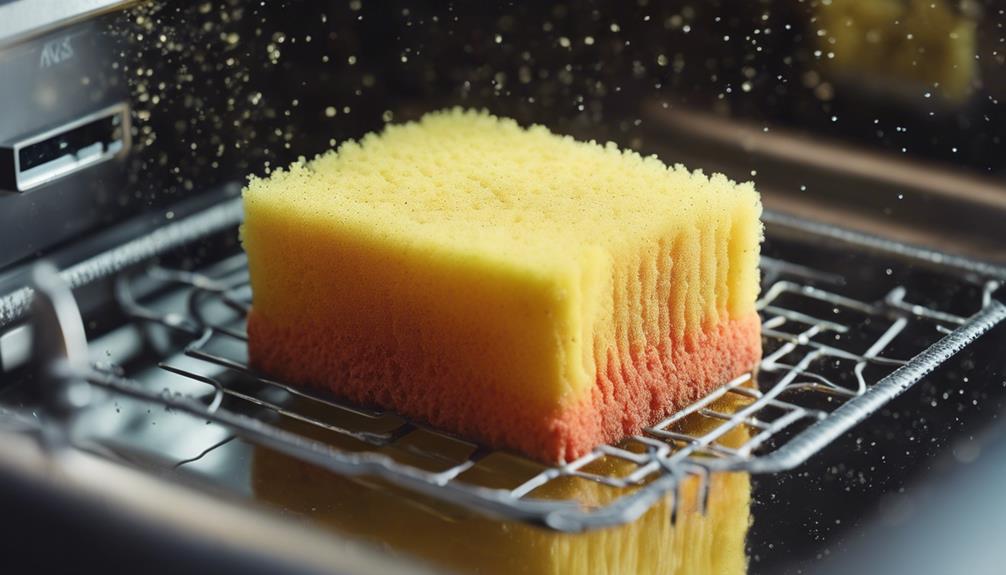
When considering alternative methods for cleaning sponges, utilizing the dishwasher can provide an effective and convenient solution for eliminating bacteria. Dishwasher cleaning is a reliable way to disinfect your dirty sponge as it kills 99.9998% of bacteria living within. This method helps reduce general bacteria, including potentially pathogenic bacteria, commonly found on kitchen sponges known as microbiological hot spots due to their high bacterial density. By incorporating dishwasher cleaning into your routine, you can maintain sponge hygiene and ensure a thorough cleaning process. Below is a comparison table highlighting the benefits of dishwasher cleaning as an alternative to microwaving for sponge-cleaning solutions:
| Dishwasher Cleaning | Microwaving |
|---|---|
| Kills 99.9998% of bacteria | Limited effectiveness |
| Convenient and thorough | Quick but less effective |
| Helps maintain sponge hygiene | May not disinfect thoroughly |
| Suitable for most sponge types | Not suitable for all sponge types |
Frequently Asked Questions
Can Microwaving a Sponge Cause Any Damage to the Microwave Itself?
Microwaving a sponge, when properly wetted, poses minimal risk to the microwave. Ensuring proper heat distribution and avoiding metal components are key for microwave safety. This method aids in disinfection, bacteria removal, and odor elimination, enhancing kitchen hygiene.
Is There a Risk of Fire When Microwaving a Sponge?
When microwaving a sponge, there is a risk of fire due to heat exposure. Sponge safety is crucial to avoid fire hazards. Wetting the sponge before microwaving reduces the combustion potential, ensuring microwave safety and household precautions are met.
Are There Any Types of Sponges That Should Not Be Microwaved?
Certain sponge types, like those with metal components or abrasive scrub pads containing metallic fibers, should not be microwaved due to safety hazards. Always check packaging for microwave safety instructions. Microwaving synthetic sponges without metal elements is generally safe for disinfection in household cleaning.
Can Microwaving a Sponge Affect Its Ability to Absorb Water?
Microwaving a sponge can significantly impact its water absorption capacity. The heat from the microwave alters the sponge's structure, affecting its ability to soak up moisture effectively. Monitoring microwave duration is crucial to maintain sponge sanitation and cleaning effectiveness.
How Often Should You Replace a Sponge After Microwaving It for Disinfection?
Regularly replace sponges every 2-3 weeks post-microwaving for disinfection. Timely replacement is crucial to prevent bacterial growth. Consider individual usage frequency. Maintain kitchen hygiene by discarding worn sponges. Have spare sponges for immediate replacement.
Conclusion
In conclusion, microwaving a sponge is a safe and effective method for killing bacteria and extending its lifespan. By following proper steps and ensuring the sponge is wet, this process can help eliminate odors and save money on replacements. Remember to discard worn or slimy sponges for optimal cleanliness.
Just like a warm hug on a chilly day, microwaving your sponge can bring comfort and peace of mind knowing it is thoroughly disinfected.

